The secrets of the Mercedes-Benz Holy Halls

Roula Khalaf, Editor of the FT, selects her favourite stories in this weekly newsletter.
“I’d like to open this evening’s auction at €50mn.” The words spoken by Sotheby’s auctioneer Oliver Barker to commence last May’s high-octane sale in a Stuttgart museum fell on the ears of an invitation-only audience that was evidently braced for something special to happen.
On offer: a 1955 Mercedes-Benz 300 SLR Uhlenhaut Coupé, revered by motoring enthusiasts for its beauty, prized by collectors for its rarity, as one of only two such prototypes manufactured by the company; €50mn already broke the record for the highest amount previously fetched by an automobile, a 1962 Ferrari 250 GTO in 2018. This was an eye-watering opening. But it was anything but over-optimistic.

The audience was in the mood. They pushed the price up swiftly through the €70mn, €80mn, €90mn barriers. There were gasps when the €100mn mark was passed. But on they went, until Barker, the chairman of Sotheby’s Europe, finally brought the hammer down at €135mn.
Barker, a man used to the heady confluence of big money and beautiful art, recalls the surreal mood of the auction, which was held at the Mercedes-Benz Museum in the company’s home town. “We were like extras in some Bond movie scene, in which very, very few people knew what was going on, and fewer still were even allowed in the room,” he says. “It was an incredible result.”
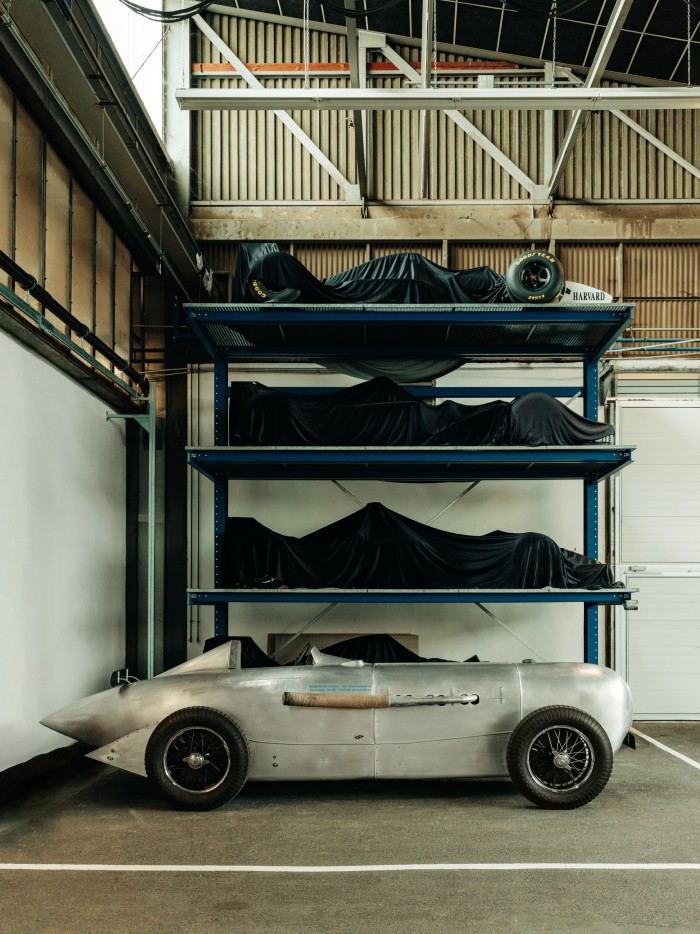
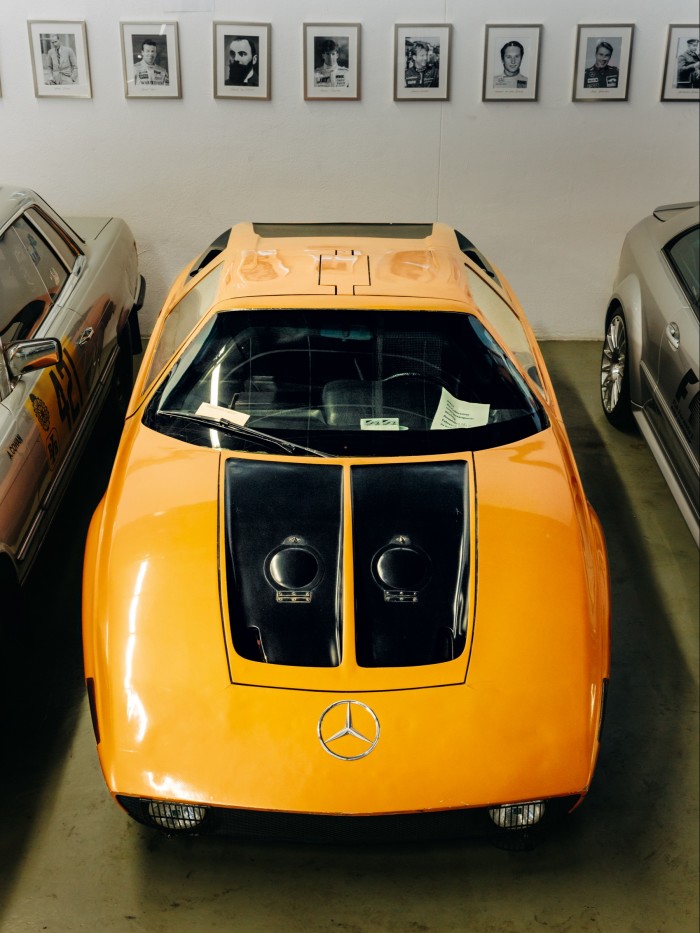
The identity of the buyer remained secret, as would that of the seller in normal circumstances. But this was different. The car was put up for sale by Mercedes-Benz itself, in order to raise money for a scholarship fund for research into environmental science and “decarbonisation”. The company also owns the other prototype, named after its creator and chief engineer, Rudolf Uhlenhaut, which will remain on display in the museum, a Guggenheim-like, spiralling 2006 edifice built outside the company’s main plant.
Since its beginnings at the start of the last century, Mercedes-Benz has made it a goal to keep at least one example of every model of automobile it has ever produced. And so the sale of the Uhlenhaut begged the question: what else was squirrelled away? And how much could it be worth? The answers are, respectively, locked in warehouses scattered around Stuttgart; and no one really knows. These low-rise buildings are studiedly inconspicuous and unrecognised by all but a few. To those in the know they go by the name of the “Heilige Hallen” (or “Holy Halls”). And it’s vanishingly rare for members of the public to see inside them.

And yet, on a first visit to one of the three halls I am allowed to see, one pleasant day in late autumn, so taken am I by the banality of its exterior that I am prompted to snap a quick picture of it as an aide-mémoire. I’m immediately, and politely, asked by one of the Mercedes team to delete the picture. There is no obvious indication of heavy-handed security, but an air of circumspection is constantly present.
Once inside, I’m confronted by four gleaming sports cars from the 300 SL Roadster series pointed straight towards me. Unusually, they are for sale, says my guide Peter Becker, for “somewhere between €1.8mn and €1.9mn each”. (He tells me this as a jokey pitch; alarmingly, my first thought is that it is quite good value next to the price paid for the Uhlenhaut to which they are related.) Although the holy halls are not in any way intended as a showroom, he tells me that “very selected vehicles, from time to time” are offered to interested parties. The open-topped Roadster is much sought after: just 1,858 models were manufactured in the years of their production, 1957-63, and it still looks timelessly stunning.
The hall, otherwise, is simultaneously as architecturally underwhelming as a municipal car park and radiant with history and loveliness. It has a disorienting effect. Most of the halls are separated according to classification – sports cars, prewar models, etc – but in this one they are all crammed together, in a chaotic surfeit of visual richness. I was once allowed five minutes on my own in the Sistine Chapel, and this room recalls a similar sensation of wanting to look in detail at everything around me, but also to stand in the middle and spin my head very fast to embrace the total effect.
As the weather has co-operated (most of the cars are not allowed out in overly damp conditions), I get the chance to have a short drive in two cars: a 1955 300 SL “Gullwing” Coupé and a 1971 600 Series “Grand Mercedes”. Some yin and yang here: a gorgeous, head-turning sports car and a luxury liner of a supercar.
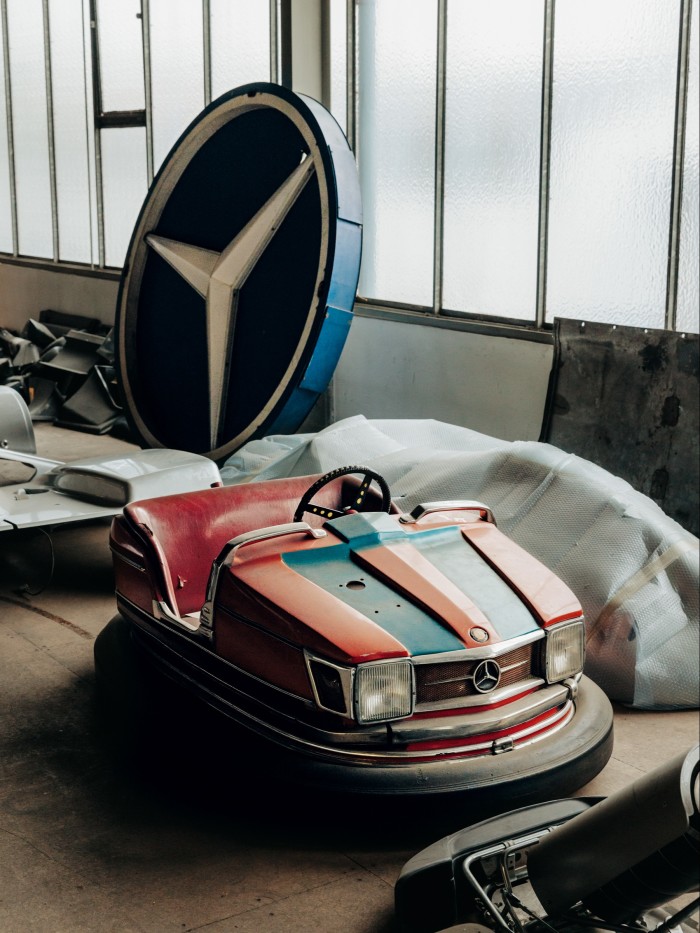
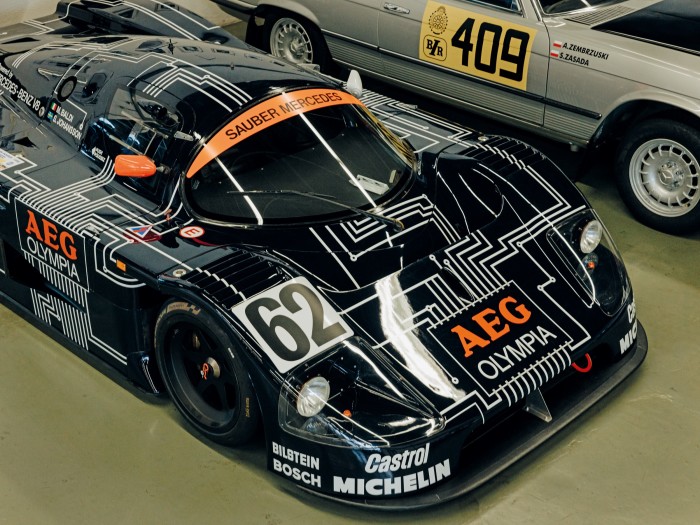
I’m feeling the need for speed, and hop into the coupé first. The “hop” takes me about a minute and a half. The gullwing design, in which the doors are opened from bottom to top, was not, as many think, a sales gimmick but a necessity, in order for the car to incorporate its lightweight frame. It looks remarkable, but it’s not great news if you are 6ft 4in and climbing into the driving seat.
“Be careful with the brakes,” advises Merlin the mechanic, a little vaguely, at the last minute, which I take to mean they’re sensitive. I trundle out into a main road and drive for a few hundred metres. As I go into second gear, I rev the engine, which responds not with a roar or a rasp but a mellifluous concentration of musical notes, not unlike a Beach Boys harmony. I am concentrating too hard on the road to notice if anyone’s head is turning, but there is plenty happening in my own viscera.
I approach a roundabout and squeeze gently on the footbrake; nothing happens. Another squeeze – still barely a sign of the car slowing down. I press hard and long, and finally I begin to come to a stop. It turns out the brake is not oversensitive, but the opposite. I have never driven a car with drum brakes before, and the lesson is bracing. I spend the rest of the journey in a mode best described as fearful cruising, allowing such absurdly large distances between me and the car in front that I am worried I will be stopped by the police for eccentric behaviour.

The Mercedes brand, I am reminded by Marcus Breitschwerdt, head of the company’s heritage division, was announced for the first time on a sports car, the 35hp, which achieved immediate racing success in the first years of the 20th century.
Breitschwerdt joined the company more than 30 years ago, has done stints as CEO of Mercedes-Benz UK and Canada, and was placed in charge of heritage last year. His passion for his new subject appears all-consuming: last year he drove a 1904 Mercedes-Simplex 28/32hp, one of the most famous of all early cars, at the London to Brighton Veteran Car Run. When I ask him how it felt, he half-closes his eyes and replies, “It gives you an unbelievable feeling of happiness, but also of modesty, sitting in something that was built all those years ago to be a thing of perfection.”
The history of the company’s most notable racers is all here in the motorsport hall: in a series of life-sized Matchbox-type cubicles, piled on top of each other, each containing a separate car. There’s also the sleek fleet of Silver Arrows that dominated racing in the prewar period.
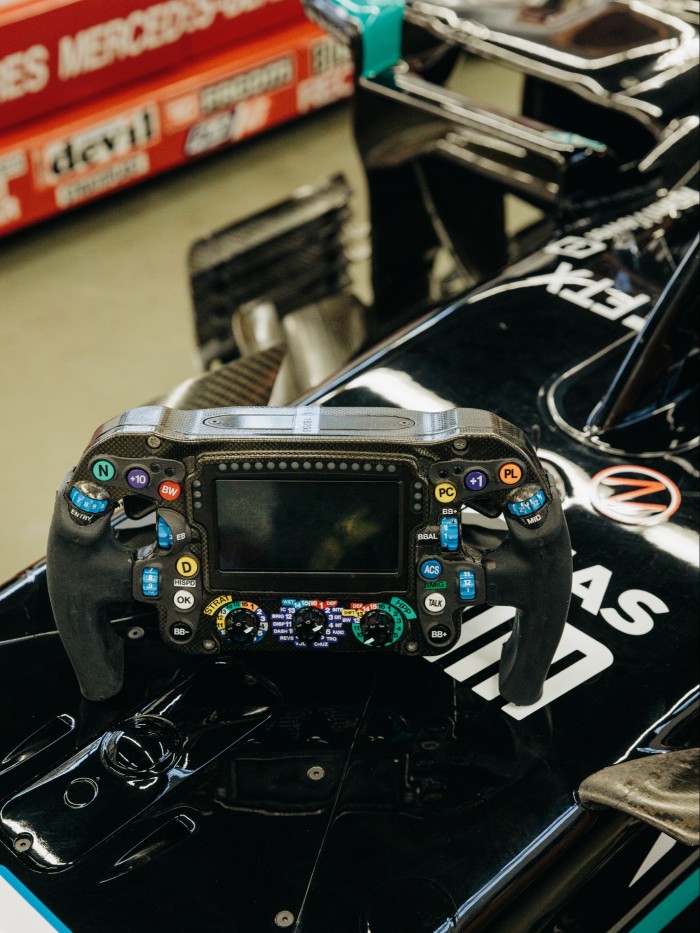

The silver colour was no intentional design feature: it emerged when paint was stripped off the cars to reduce their weight. Here is the model driven to victory in the French Grand Prix of 4 July 1954 by Juan Manuel Fangio, at an average speed of more than 186kmph. On the same day, the German football team beat the much-fancied Hungarians in the World Cup in the “Miracle of Bern”. A similarly supernatural label was applied to Fangio’s win, acclaimed as the “Miracle of Reims”. The coincidence of the double victory heralded the triumphant return of Germany to the world’s sporting stage after the war.
We walk past another streamlined beauty, the W125 12-cylinder car that was driven in January 1938 by Rudolf Caracciola to break the world speed record on public roads, reaching 432.7kmph. Just hours after the record drive, a rival driver, Bernd Rosemeyer, was killed in an accident after his Auto Union car was caught by a gust of wind and veered off the road. There are drivers’ photographs hung like icons all around this part of the halls.
We stop in the Formula 1 section, where I study the car used by Valtteri Bottas in the 2021 World Championship. I am handed the steering wheel from the car, festooned with a variety of colourful buttons. This is the part of the car that despondent drivers beat their hands or heads against in the face of lucklessness. It is surprisingly heavy. “Yes, and it costs €750,000 to make,” responds another member of the team neutrally. I place it down gently.
On our way out, there is an unremarkable beige car with “SENNA” written crudely on the windscreen. It comes from a race held in 1984 to commemorate the reopening of the Nürburgring, in which 20 drivers raced in identical cars. The race was won by the little-known 24-year-old Ayrton Senna.


My second Mercedes drive, with the 600 series, could not be more different from the first. Comfort is the watchword: the model was lauded at its 1963 launch for its luxuriousness: air suspension, power brakes, central locking and an electronic heating system. I am warned not to put my fingers anywhere foolish when the hydraulic boot closes. Otherwise? There is much shaking of heads.
Merlin rides with me and points to an array of interior features, the most memorable of which is the dashboard made from Brazilian rosewood. I am too relaxed to take in most of the information. The purr of this car’s engine could be the soundtrack of the postwar German economic miracle. The 600 was customisable for individual tastes and was among the first cars to offer extras such as telephones, TVs and on-board bars. Among its drivers were Elvis Presley, Elizabeth Taylor and Coco Chanel.


Back in the halls, we stroll through the sections devoted to luxury and specially commissioned vehicles. There are six Popemobiles in the company collection, three of them based here: the conventional-looking models made for Popes John XXIII and Paul VI, and the 2002 ML 430, with the raised roof, for Pope John Paul II, who disliked the “undignified” sobriquet given to the vehicle.
On a more worldly level, there is the handsome 1930 car built for the Maharaja of Kashmir, all subdued creams and soft greys, with elegant wooden decking on the step-plate, commissioned so that he could be chauffeured to his private yacht. It is a conspicuous piece of decadence in this unlikely venue that, notwithstanding the magnificence of its contents, also exudes pragmatism. The holy halls were established from “humble beginnings”, says Breitschwerdt. “This was a poor area. We didn’t throw anything away.”
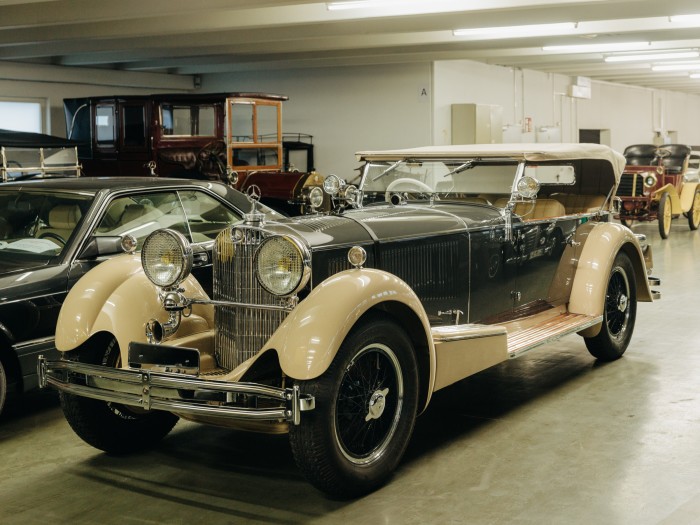
He says that three imperatives have driven the collection: to document the history of Mercedes-Benz; to tell that story to the outside world; and to help “calibrate the character of the company” internally, by studying its past. “Heritage. Is. Future,” he says slowly. “That doesn’t mean you do the same things again and again. It is about keeping the same spirit alive.”
It’s a sentiment echoed by the company’s CEO Ola Källenius, who joins us at the end of the tour. He talks about the need to respond to the two important trends facing the industry – digitalisation and non-carbonisation – in a way that is true to the company’s values. It doesn’t sound very romantic, I say. He shows me one of the newest cars in the collection, a Maybach S-Class, and points to the dashboard. “Here we have a very beautiful OLED screen. It is the most expensive, most high-resolution screen you can buy. Is that romantic? Maybe not. But we haven’t done it without love, like some brands who take an iPad and stick it on the dashboard. Yes, we will go digital, we will go electric. But we will never lose the luxury touch.”
For now, there are no plans to replicate last year’s spectacular sale other than on a very occasional basis. It is also not intended to give more public access to the halls, although Breitschwerdt points out that cars continue to travel to shows and classic races. “They are not here to be hidden,” he says determinedly. “We take them out. And we keep them running.”



Comments